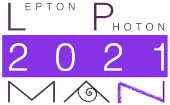Speaker
Description
The next generation long-baseline neutrino oscillation experiment, Hyper-Kamiokande, will consist of a 260 kt underground water Cherenkov detector, placed 295 km from the neutrino source at J-PARC. This is generated by a 1.3 MW proton beam striking a target. In addition, a suite of near detectors, both on and off-axis will be used. With this, Hyper-Kamiokande aims to perform precision measurements of the parameters governing neutrino oscillations, the observation of CP violation being one of the main aims of the experiment. To achieve these goals, Hyper-Kamiokande will require smaller systematic uncertainties than in any previous long-baseline experiment.
Many of these systematic uncertainties are related to neutrino-nucleus interactions, and can be constrained by a detector placed close to the beam production point. For this, the Hyper-Kamiokande long-baseline programme includes an Intermediate Water Cherenkov Detector, the IWCD. This is a 500 tonne water Cherenkov detector located 1 km from the beam production point. This detector is able to move within a vertical shaft and span a range of off-axis angles relative to the beam, from 1 to 4 degrees. The combination of large target mass, precise water Cherenkov reconstruction and off-axis angle flux dependence allows for high purity and high statistics electron neutrino and electron antineutrino samples. In this talk I will describe how this detector can be used to constrain the major systematic uncertainty affecting the measurement of CP violation at Hyper-Kamiokande: the electron neutrino and antineutrino interaction cross section.




